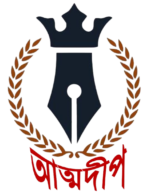Volume-I, Issue-V, May 2025 > Volume-I, Issue-VI, July 2025
Volume-I, Issue-VI, July, 2025 |
Received: 07.07.2025 | Accepted: 10.07.2025 | ||
Published Online: 31.07.2025 | Page No: 1628-1634 | ||
DOI: 10.69655/atmadeep.vol.1.issue.06W.171 | |||
বিশ শতকের বাংলার আয়ুর্বেদচর্চায় দুই আয়ুর্বেদবিদ: ব্যক্তি থেকে প্রতিষ্ঠান শুভঙ্কর কুণ্ডু, গবেষক, ইতিহাস বিভাগ, কল্যাণী বিশ্ববিদ্যালয়, পশ্চিমবঙ্গ, ভারত |
Two Ayurvedic Practitioners in 20th Century Bengal’s Ayurveda Practice: From Individuals to Institutions Shubhankar Kundu, Research Scholar, Department of History, University of Kalyani, West Bengal, India | ||
ABSTRACT | ||
From the early part of the 20th century, a renewed wave of interest in Ayurvedic practice emerged in Bengal. While from ancient India up to the 19th century, the practice of Ayurveda largely followed a hereditary lineage, in the 20th century, this tradition was broken as Bengali Ayurvedic practitioners began institutionalizing Ayurvedic studies through personal initiatives. On February 10, 1916, the first school dedicated to Ayurvedic practice was established in Kolkata, named the ‘Ashtanga Ayurveda College’. Following this, on April 14, 1921, the ‘Vaidyashastra Pith’ was founded, and in 1932, the ‘Vishwanath Ayurved Mahavidyalaya and Hospital’ was established. These were all collectively formed centers for Ayurvedic studies. However, in 20th-century Bengal, there were two Ayurvedic practitioners who, driven by personal interest, studied Ayurveda on their own and later went on to establish Ayurvedic colleges and hospitals independently. These two Ayurvedic scholars were Kaviraj Raghunath Maity and Kaviraj Nanigopal Sarkar. The institutions—colleges and hospitals—that they founded in two different districts of Bengal continue to operate today as non-governmental institutions, providing Ayurvedic education and healthcare services. The adverse and challenging circumstances under which these two institutions were established are nothing short of remarkable. Therefore, this article aims to present the history of these two Ayurvedic practitioners of 20th-century Bengal and the institutions they founded. | ||
Keyword:
|

